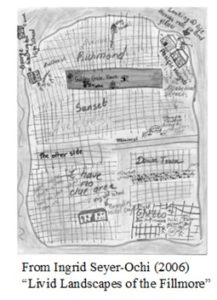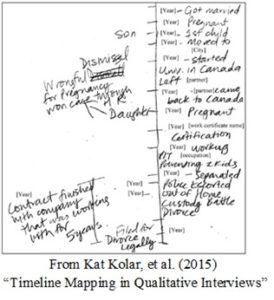NYKids Using Creative Methods to Tap Students’ Perspectives
By Aaron Leo
A major goal of qualitative research is to glean a rich and deep understanding of participants’ experiences and perspectives. Unlike quantitative studies that often seek to confirm a hypothesis or identify a particular trend or pattern through analysis of numerical data, qualitative researchers “…study things in their natural settings, attempting to make sense of, or interpret, phenomena in terms of the meanings people bring to them” (Denzin & Lincoln, 2008).
Qualitative researchers typically conduct interviews and focus groups and complement these data sets with documents, artifacts, and observations. Interviews and focus groups are particularly key as they give participants a chance to express rationales for their behaviors, their beliefs and their values, and how they make sense of their experiences. Interviews can range from highly structured question formats to unstructured—the latter providing more flexibility as to what is expressed.
Although interviews and focus groups are useful tools, they can be enhanced by complementary methods. One particular technique that can enhance the richness of an interview or focus group is mapping and drawing. These types of activities yield visual representations of participants’ perspectives on things such as meaningful spaces in their lives.
Hand-drawn maps–or what Ingrid Seyer-Ochi calls “lived landscapes”– allow participants to display important features in their neighborhoods and to also depict the ways they envision their relationship to their community.
As Kimberly Powell writes, such maps provide “more than sense of the physical spaces that we traverse through, maps can shed light on the ways in which we traverse, encounter, and construct racial, ethnic, gendered, and political boundaries.”
Time is another dimension qualitative researchers often consider when interviewing participants. Researchers may want to know how a participant’s experiences over time have shaped the way they currently think about a topic and how they are planning for the future. As we all know, it can be difficult to recall important events that have happened years ago, and it is even harder to order those events in terms of cause and effects and to articulate the import of these events clearly when asked.
Timelines offer a promising solution to these obstacles. By providing research participants with opportunities to draw timelines as a way of reflecting on their experiences over the course of a period of time, they can indicate the major events that have occurred in their lives and provide insights as to how these events have shaped their behaviors and attitudes.
As Kat Kolar and colleagues report, timelines “strengthen data by enhancing interviewer-participant rapport, mutual understanding, and reflexivity through interactive and supportive engagement with a time-lined representation of a participant’s life.”
With all these considerations in mind, the NYKids research team has adopted several of these techniques in the College and Career Readiness Phase 2 – Student Study that is currently underway.
While these methods of data collection are ideal for research studies, they also can be taken up by educators who seek to get students’ insights as a way of improving how they address student needs. Stay tuned for samples of these tools and the study results over the next several months.


